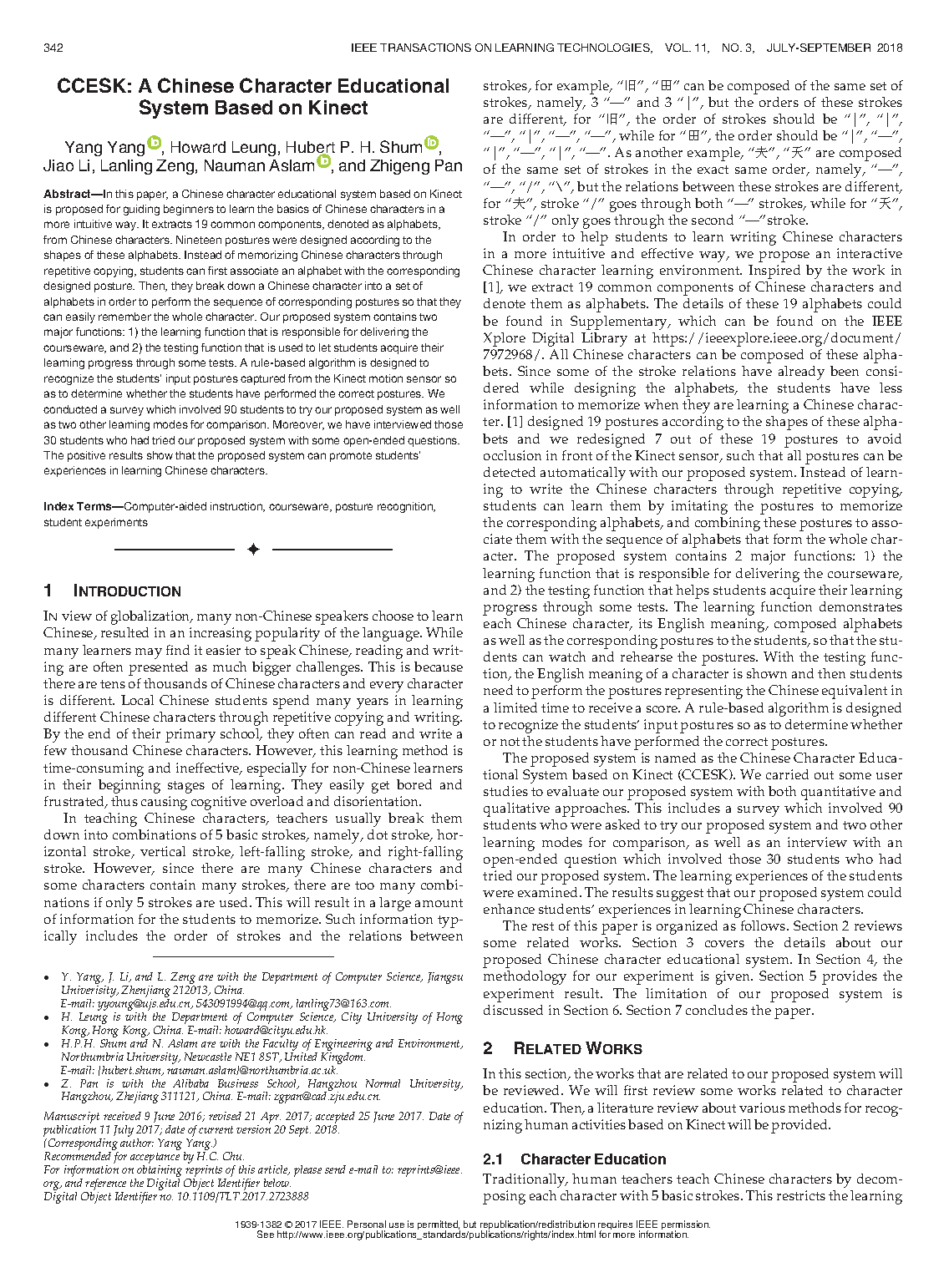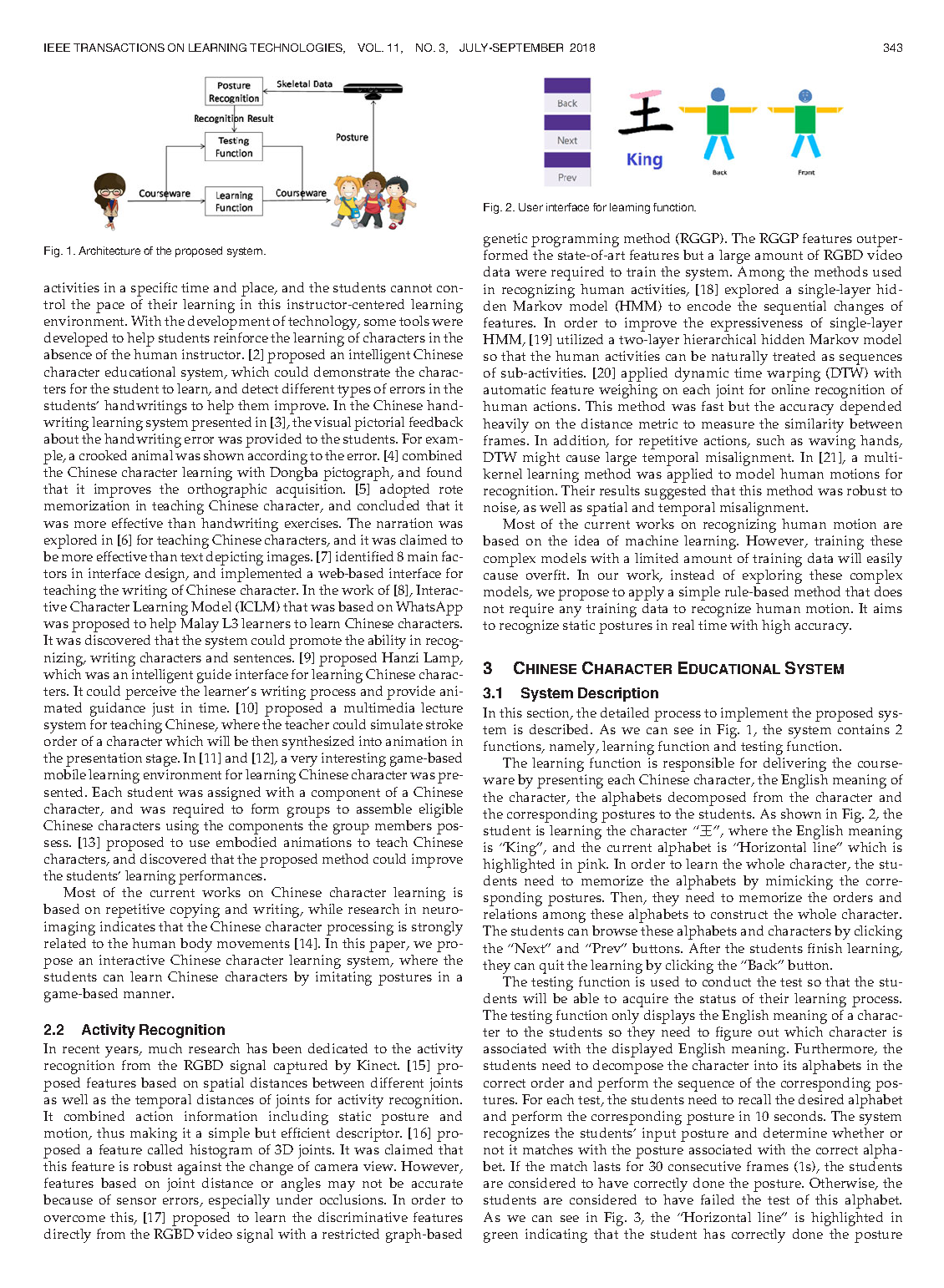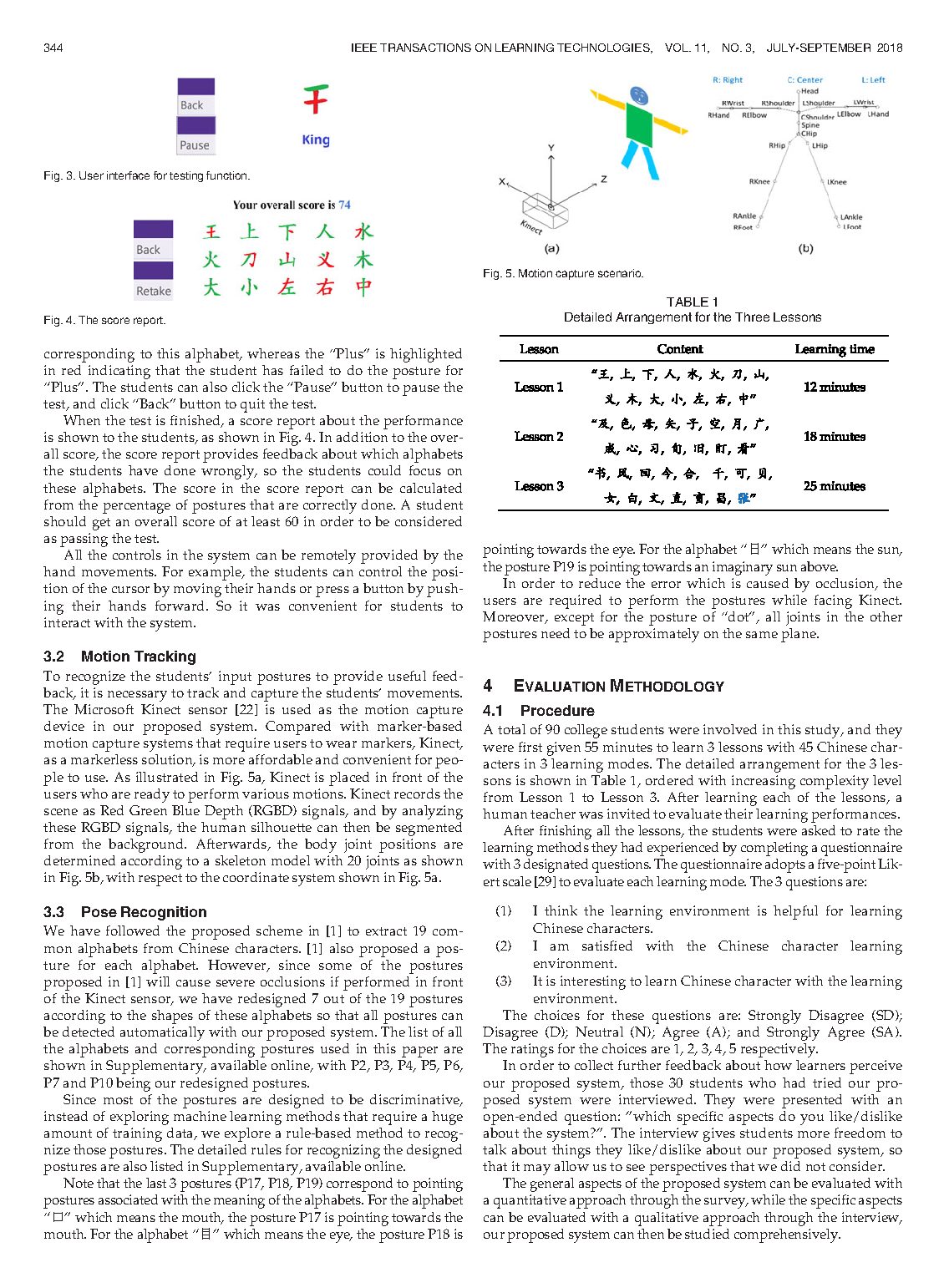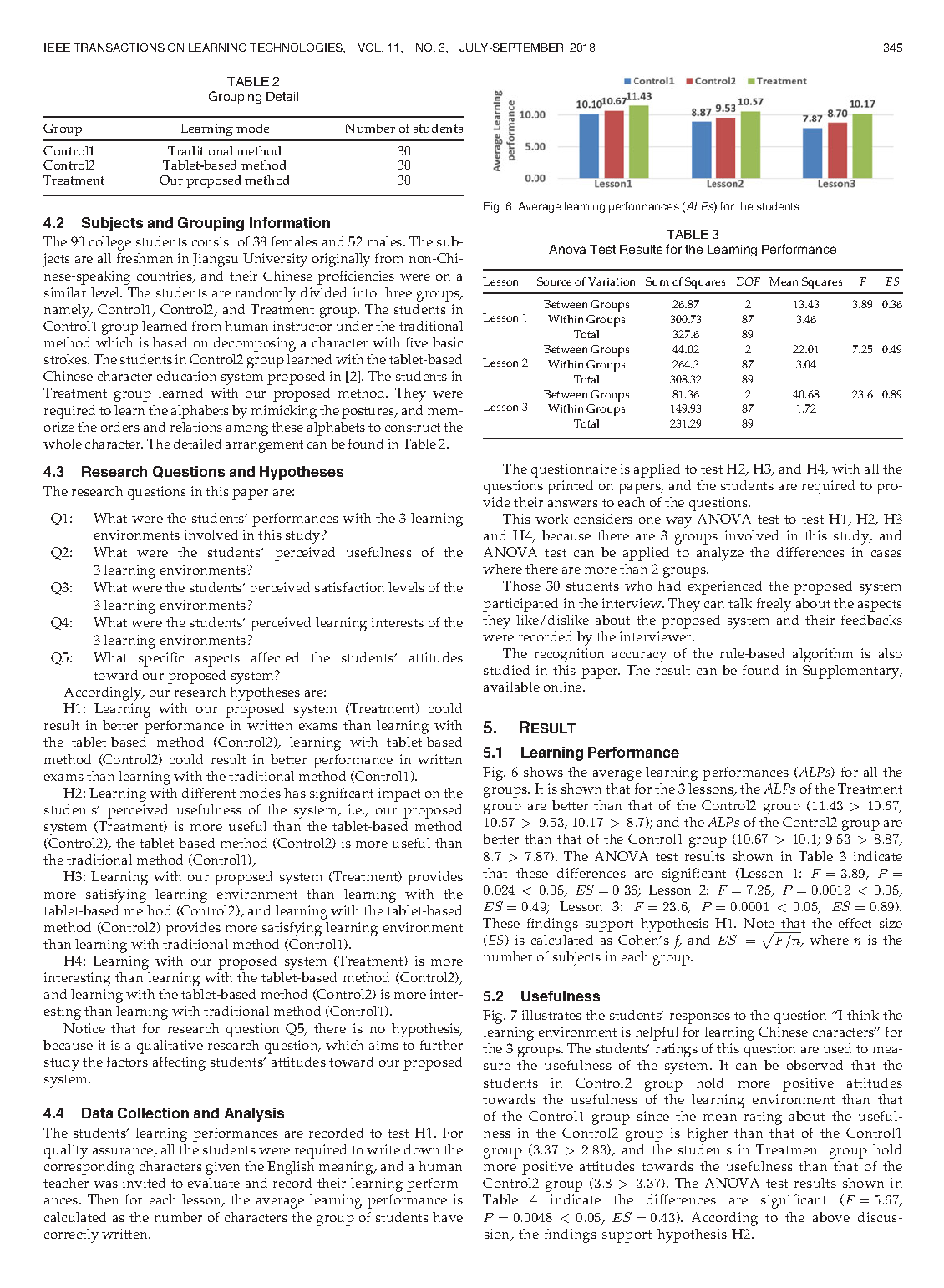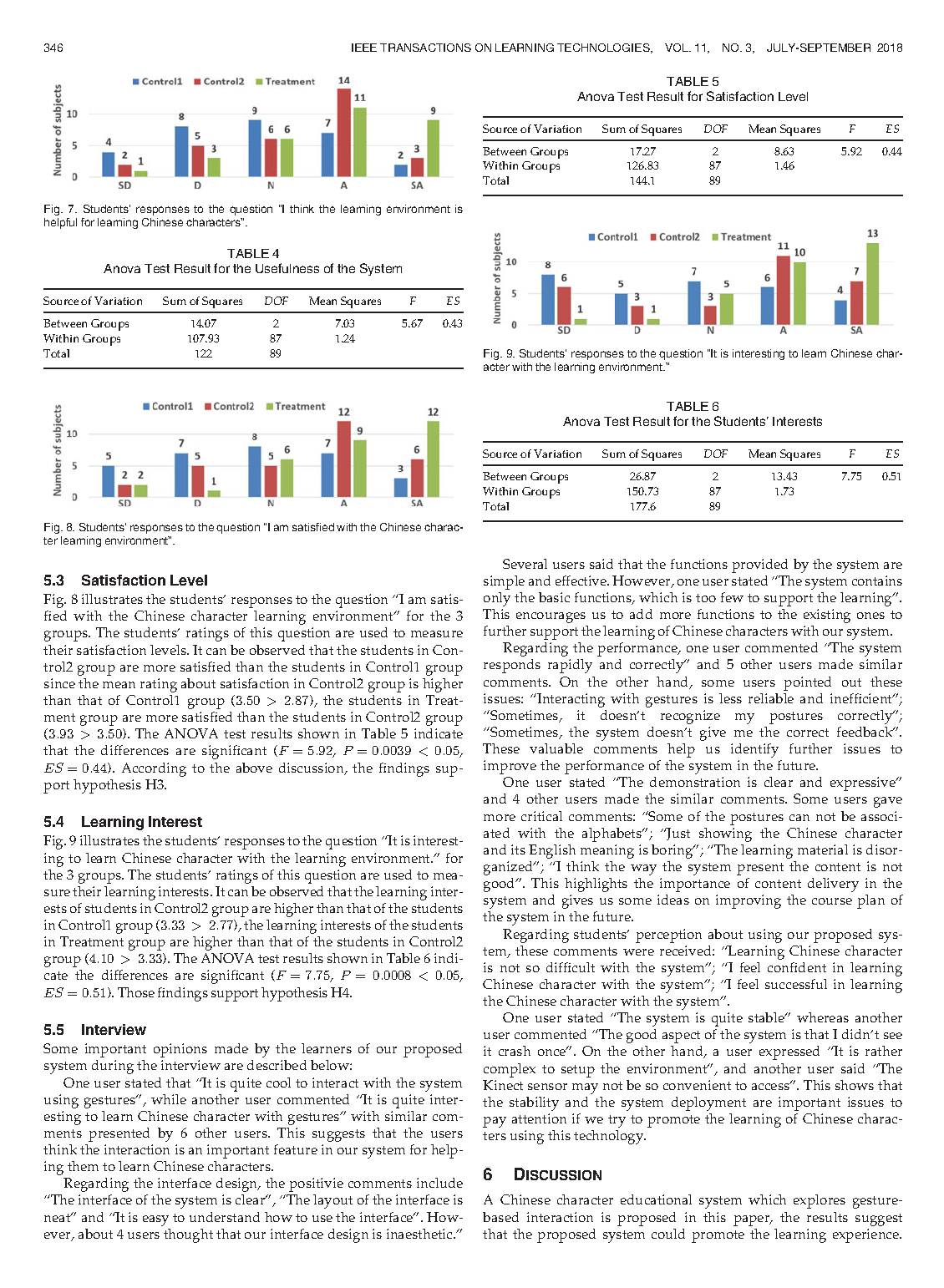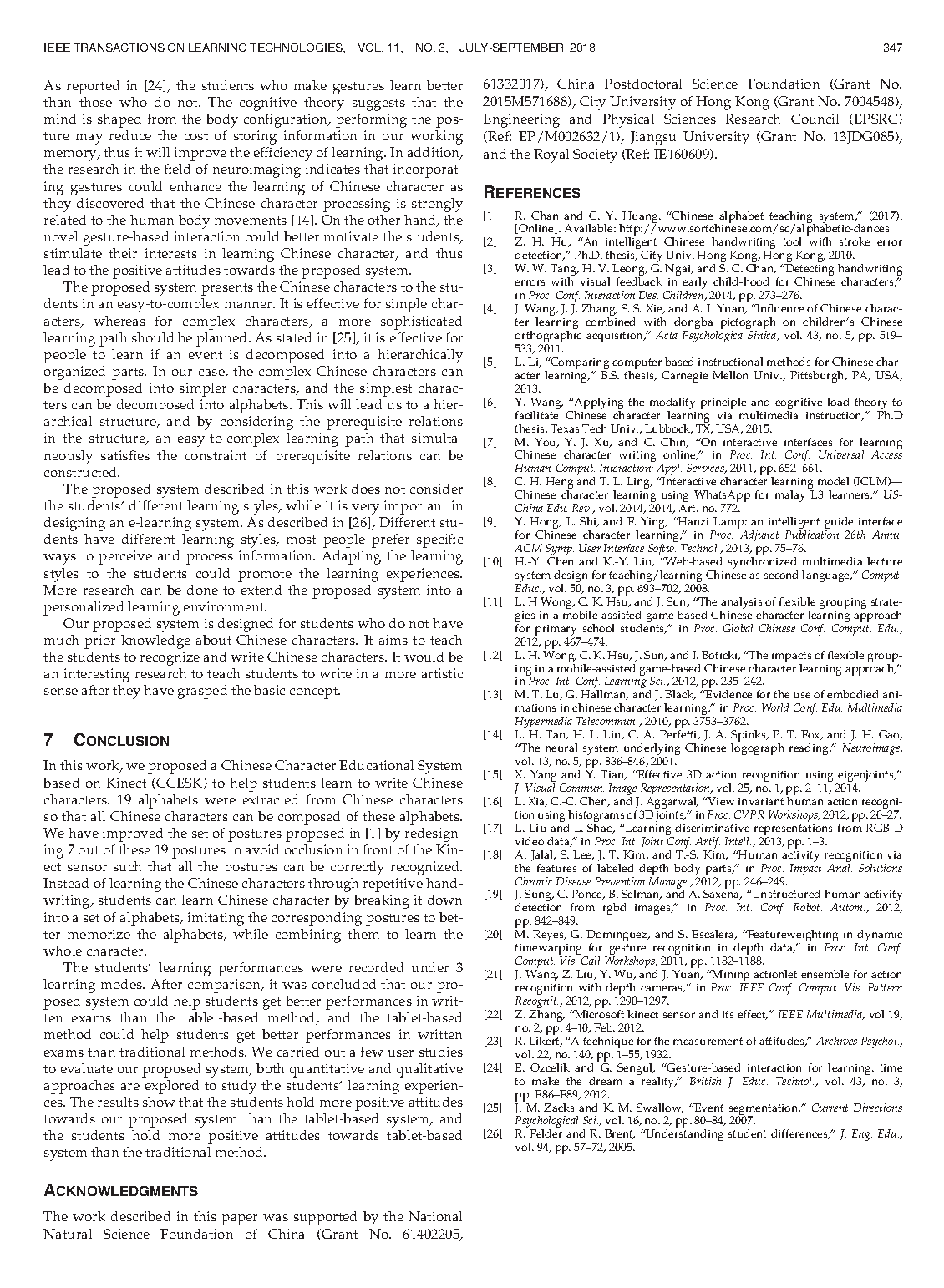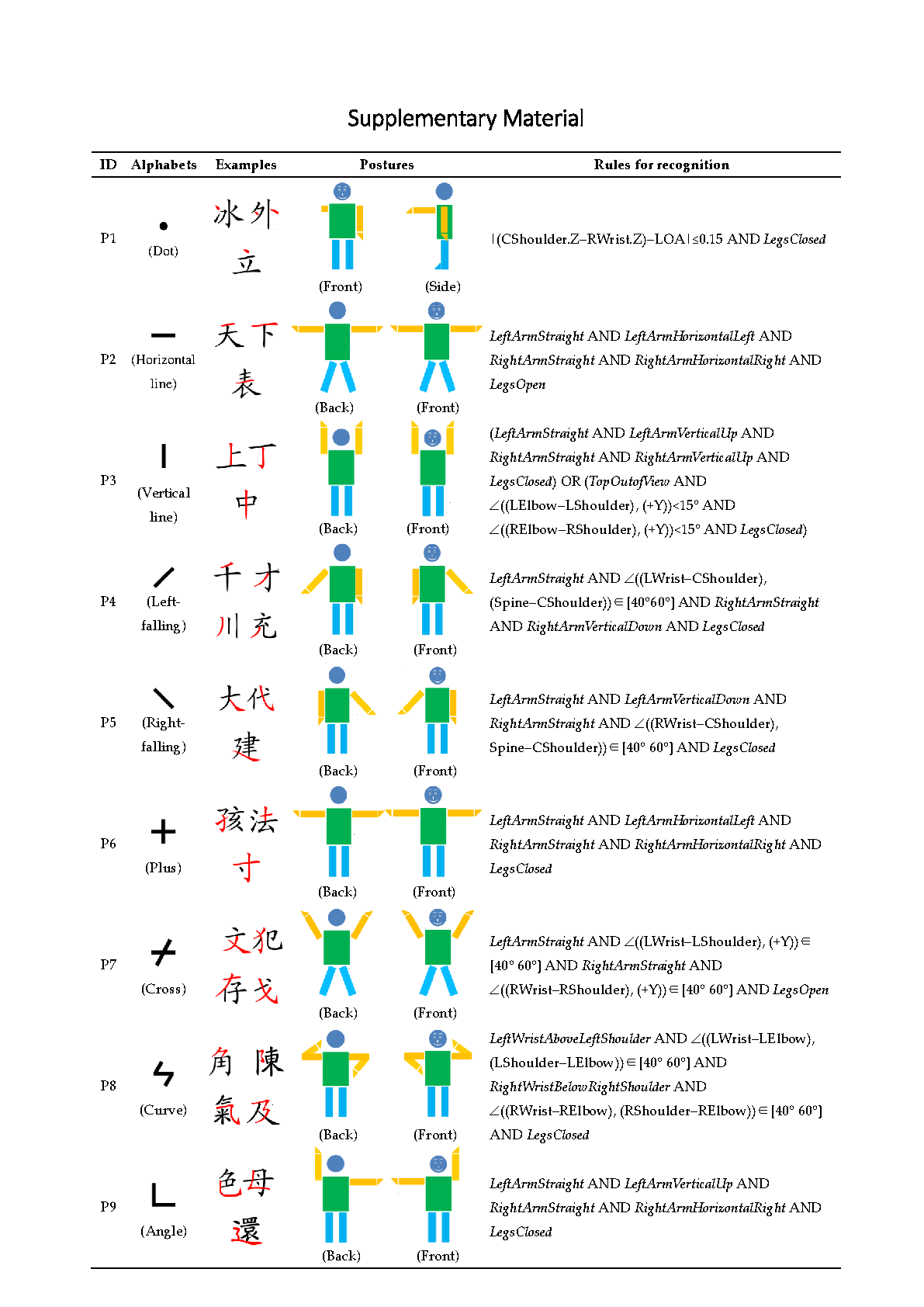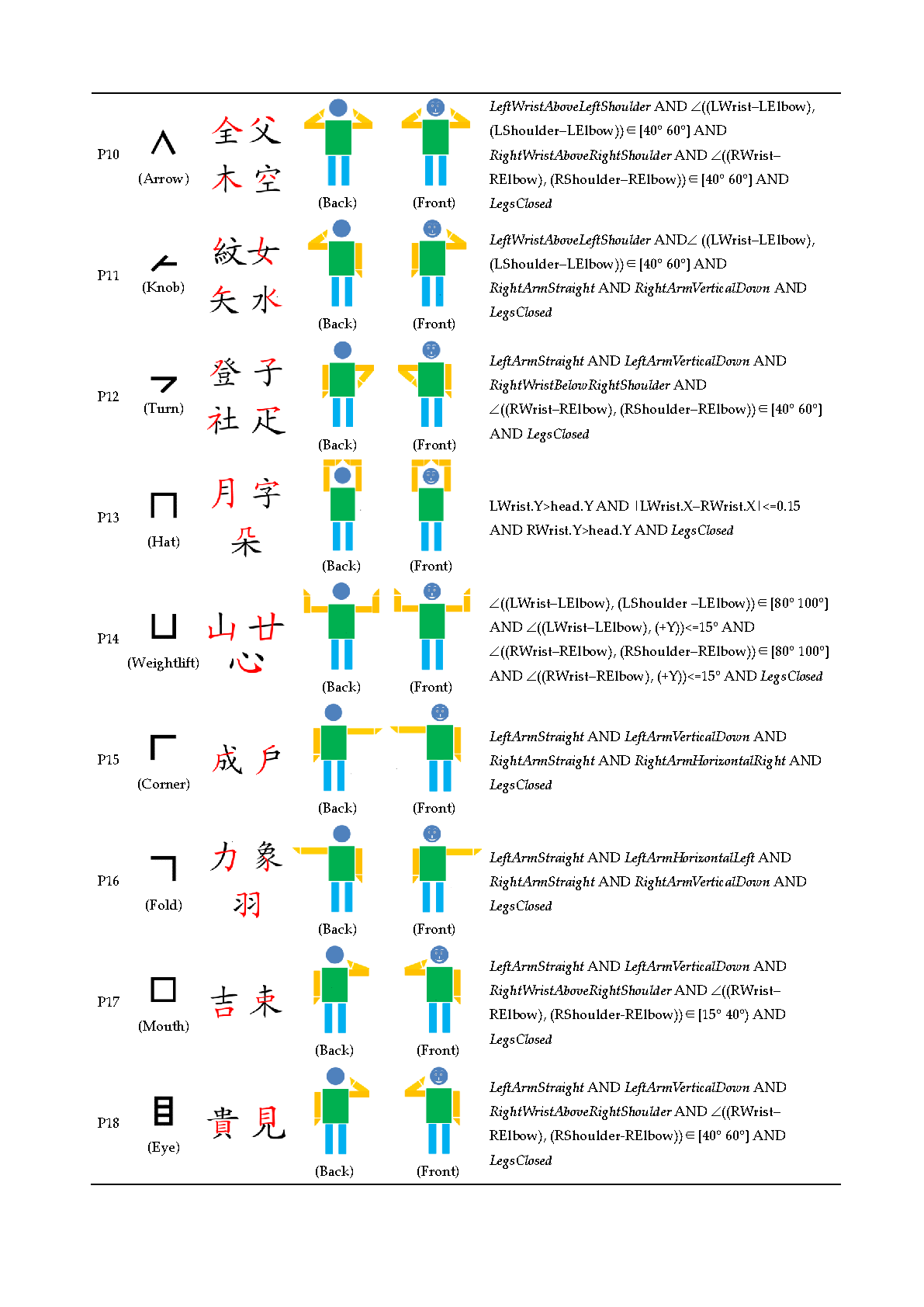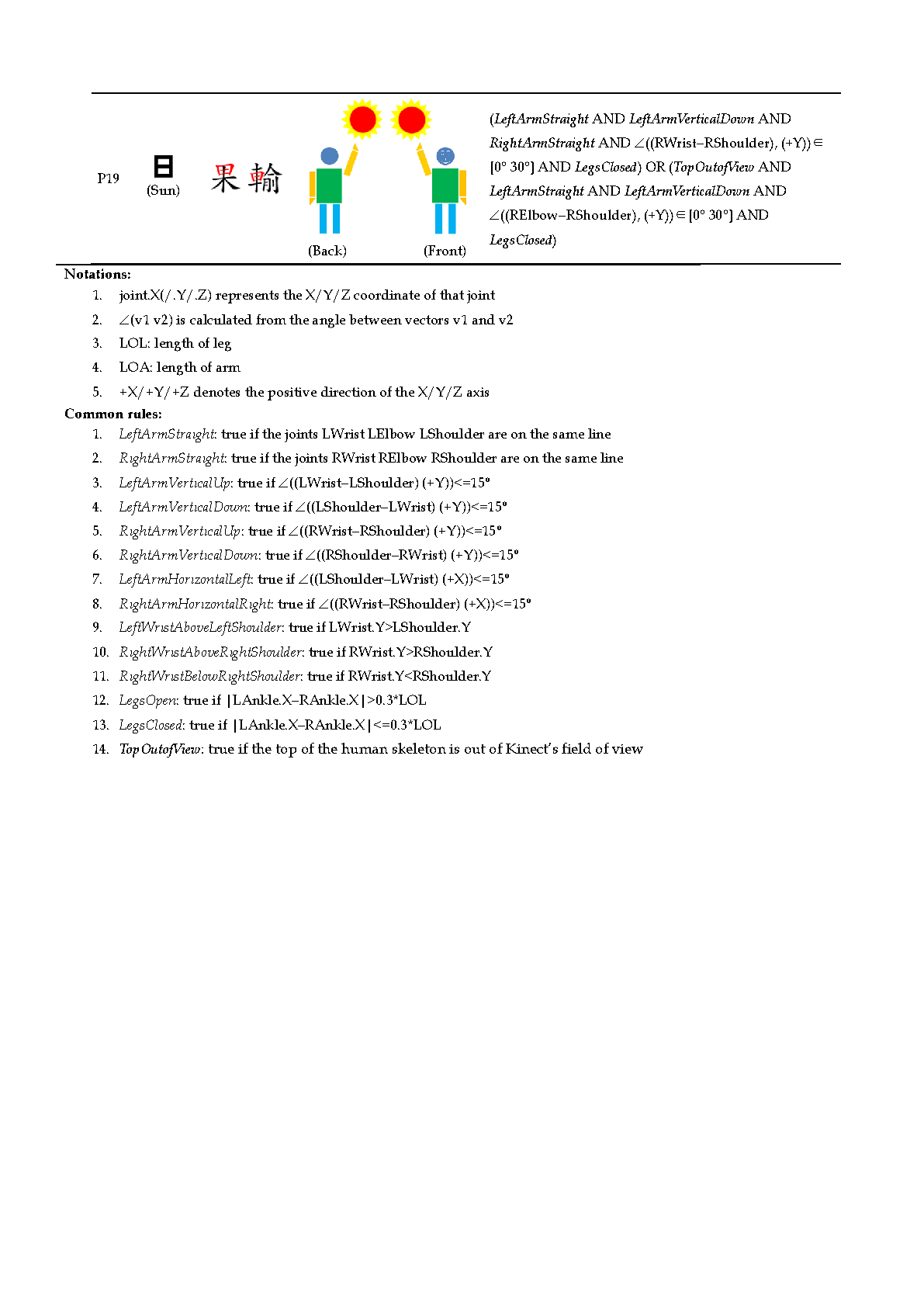CCESK: A Chinese Character Educational System Based on Kinect

Abstract
In this paper, a Chinese character educational system based on Kinect is proposed for guiding beginners to learn the basics of Chinese characters in a more intuitive way. It extracts 19 common components, denoted as alphabets, from Chinese characters. 19 postures were designed according to the shapes of these alphabets. Instead of memorizing Chinese characters through repetitive copying, students can first associate an alphabet with the corresponding designed posture. Then they break down a Chinese character into a set of alphabets in order to perform the sequence of corresponding postures so that they can easily remember the whole character. Our proposed system contains 2 major functions: 1) the learning function that is responsible for delivering the courseware, and 2) the testing function that is used to let students acquire their learning progress through some tests. A rule-based algorithm is designed to recognize the students' input postures captured from the Kinect motion sensor so as to determine whether the students have performed the correct postures. We conducted a survey which involved 90 students to try our proposed system as well as two other learning modes for comparison. Moreover, we have interviewed those 30 students who had tried our proposed system with some open-ended questions. The positive results show that the proposed system can promote students' experiences in learning Chinese characters.
Publication
CCESK: A Chinese Character Educational System Based on Kinect by Jie Li, Yanpeng Qu, Fei Chao, Hubert P. H. Shum, Edmond S. L. Ho and Longzhi Yang in 2020
IEEE Transactions on Learning Technologies (TLT)
Links and Downloads
